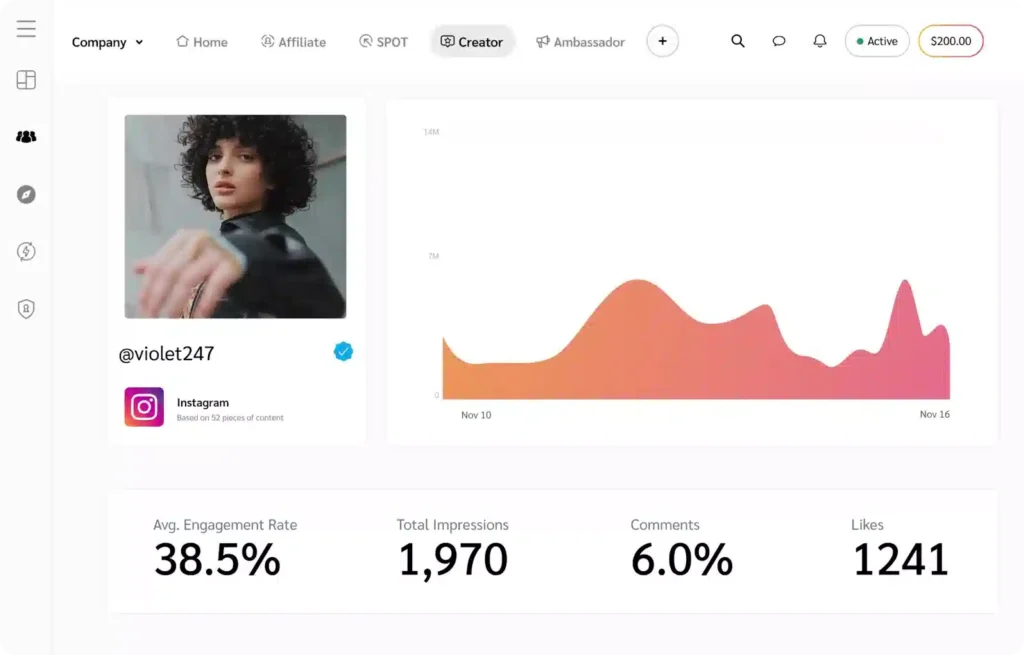In our recent webinar, industry leaders shared invaluable insights about the transformative power of influencer marketing in Southeast Asia’s beauty and fashion sector. With social media marketing spend projected to exceed $4.4 billion USD by 2025 and influencer marketing growing at over 10 percent annually, brands are racing to optimize their strategies.

“Today, people want information through new channels, such as TikTok,” explains Vanessa Yeo Barger, General Manager of Marketing at Lenskart.com. “In our store recently, a customer searched TikTok to validate if their chosen eyewear suited their face shape—something unimaginable five years ago. Consumers expect immediate, accessible information.”
This shift in consumer behavior is delivering remarkable results. TikTok reports 90 percent of Southeast Asian users take action after seeing beauty-related sponsored content, while impact.com’s research reveals 82 percent of shoppers recently purchased beauty and fashion items based on influencer recommendations.
Joined by Leslie See, Commerce Director at Dentsu Singapore, our panel explored how beauty and fashion brands can effectively partner with influencers to scale their reach and tap into new markets. Here are their key strategies for success.
How influencer marketing helps you connect with shoppers
Research shows that 60 percent of Southeast Asian consumers follow influencers for lifestyle inspiration, while more than 50 percent actively seek their product recommendations. This direct line to engaged audiences makes influencer marketing particularly powerful for beauty and fashion brands.

Diag: E-commerce Influencer Marketing in Southeast Asia report, pg 13
Successful creators build trust through authentic content and unique perspectives, developing communities that value their opinions. When these influencers partner with aligned brands, they create compelling content—from detailed product reviews to hands-on demonstrations—earning commissions on tracked purchases.
These partnerships reach beyond traditional marketing channels, connecting with audiences through trusted voices who share your brand’s style and values. This alignment means brands get authentic advocacy that paid advertising simply cannot replicate.
Taking a unique approach to consumer habits
“Consider if the emerging trend is going to add value to your consumer,” advises Leslie See, Commerce Director at Dentsu. “Embrace upcoming opportunities, but be cautious about adopting trends that offer no real consumer value. That’s how influencer marketing becomes an effective tool.”
The most successful influencer programs share a common foundation: they prioritize consumer insights over rigid campaign planning. This flexible approach allows brands to:
- Test and optimize content formats based on audience engagement
- Adapt quickly to emerging market trends
- Experiment without significant upfront investment
- Respond to changing consumer research and shopping patterns
“Look at consumer data – how people discover information, what they want to see, and how often they want to see it,” explains Vanessa Yeo Barger of Lenskart.com. “This data must inform your influencer marketing strategy.”

Instead of pushing traditional marketing messages, successful brands focus on joining existing conversations. Influencer marketing excels at connecting with consumers, where they naturally spend time, share tips, and build communities. The goal isn’t simply promoting products – it’s about finding authentic advocates who can represent your brand within communities already primed to appreciate what you offer.
Why influencer marketing isn’t an ad replacement [and doesn’t need to be]
“We see influencer marketing as a subset of the overall affiliate program,” explains Leslie See of Dentsu. “This allows us to take a holistic approach to incorporating influencers into the affiliate program and better understand all the partners we’re working with.”
Successful brands recognize that influencer marketing complements traditional advertising, not replaces them. Each channel serves distinct purposes:
Traditional Ads:
- Reach broad audiences efficiently
- Drive immediate awareness
- Deliver measurable short-term ROI
Influencer Marketing:
- Breaks into niche markets through trusted voices
- Builds long-term brand credibility
- Reaches audiences that might resist traditional advertising
For example, while display ads on beauty websites might not effectively reach male shoppers, partnerships with fitness influencers can introduce your products to this demographic authentically. The key is leveraging each channel’s strengths rather than viewing them as competing options.
How influencer marketing fits perfectly at every step of the sales funnel
The role of influencers has evolved far beyond vanity metrics like follower counts and post likes. Today’s successful influencer partnerships drive value throughout the entire customer journey—from initial brand awareness to final purchase decisions.
Authentic creators serve multiple strategic purposes: they introduce brands to new markets, build credibility through trusted recommendations, and convert interest into sales through personalized content. This versatility allows brands to activate different types of influencers at each stage of the funnel, whether supporting broad awareness campaigns or driving bottom-funnel conversions.
Empower influencers and build on their strengths

Diag: E-commerce Influencer Marketing in Southeast Asia report, pg 19
Picture your influencer program as a dynamic wheel, with each section representing a different stage of the customer journey. Like spokes providing essential support, diverse influencer partnerships keep your marketing momentum strong:
Top of funnel: Macro-influencers drive brand awareness, introducing you to new markets with their broad reach.
Middle of funnel: Expert content creators build credibility through detailed reviews and demonstrations, converting interest into consideration.
Bottom of funnel: Trusted niche influencers share exclusive discount codes and specific product recommendations, turning consideration into purchases.
The wheel continues spinning as these same influencers nurture existing customers through consistent engagement and authentic advocacy. Rather than restricting creators to rigid roles, this fluid approach lets them leverage their unique strengths while supporting your broader affiliate strategy.
Launching a sustainable influencer program step-by-step
Successful influencer programs aren’t the default. Companies taking a short-cut on recruiting the right partners will struggle. However, brand opportunities with strong messaging and identity are growing daily. Here’s how to set your influencer program up for success from day one.
Defining your brand fit
“Community comes first,” emphasizes Vanessa Yeo Barger of Lenskart.com. “Start with that common interest, that shared value. Your brand persona should be the guiding light for finding like-minded influencers who truly personify your message. Today’s savvy consumers demand authenticity.”

Building a successful influencer program starts with clearly defining your brand’s identity. Consider:
- Core community values that unite your team, customers, and products
- Content style preferences (polished brand aesthetics vs. authentic UGC)
- Target audience demographics and engagement patterns
- Historical performance of past partnerships
“Understanding what you’re trying to achieve is crucial,” adds Leslie See of Dentsu. “Your influencer partnerships must align with both your brand values and business objectives.”
While your brand positioning may evolve over time, establishing these foundational elements early saves significant resources. This framework helps you identify creators who can authentically represent your brand and connect with your target audience.
Choosing the right partners
With your brand fit in mind, reach out to influencers matching your persona. Rather than aiming for the biggest creators regardless of content topics and style, look for influencers who already speaking to your target audience.
Finding reliable influencers on your own isn’t easy. Thankfully, the right tools make all the difference. With impact.com’s purpose-built influencer partnership platform (impact.com /creator), brands can connect with over 80,000 experienced, vetted content creators. You’ll see live audience metrics and detailed demographic breakdowns for each potential partner.

After filtering for compatible influencers, you can easily reach out and start a lasting partnership—negotiating contracts, sharing campaign assets, and offering feedback all on impact.com’s platform.
Starting small and scaling up
“The right partners and platform are crucial for executing your vision,” shares Vanessa Yeo Barger of Lenskart.com. “I learned the hard way—manually tracking everything eventually becomes impossible to scale. You end up sabotaging your own growth.”
To build a sustainable influencer program, focus on establishing strong foundations before rapid expansion:
- Start Smart:
- Define clear KPIs and tracking metrics
- Implement automated tools for contracts and payments
- Use impact.com’s platform for streamlined reporting
- Test partnerships with minimal upfront investment
- Scale Strategically:
- Monitor performance data to refine partnership criteria
- Gradually expand your creator network
- Document successful campaigns and UGC
- Showcase measurable results to stakeholders through concrete examples
Unlike traditional marketing campaigns, influencer programs don’t require massive initial investments. This flexibility allows you to test, learn, and grow organically while minimizing risk.
FAQs
Historically, influencer marketing focused on individual creator partnerships to build brand awareness and trust. Affiliate marketing included comparison sites, review blogs, media publishers, and other partners offering unique discount codes or generating leads. However, savvy brands are now succeeding with influencers at every step in the sales funnel rather than keeping them separate from the larger affiliate network.
Content creators of all sizes (from nano-influencers to celebrities) help brands reach new audiences and enter new markets successfully. Influencers with larger followings can raise name recognition and awareness broadly. However, recommendations from smaller creators with niche expertise and high audience respect are powerful for winning over shoppers.
Don’t try to figure out every step and tool yourself. Instead, use tried and tested tools to make influencer discovery, recruitment, and feedback easier. Start by defining your brand fit so you know which creator category would work best for you. Then, find your first partners on impact.com’s trusted marketplace. Keep communication open and see what posts and videos work best. Keep refining your strategies and maintaining your partnerships for the long haul. You’ll start scaling up in no time.
Getting the most out of your influencer program
Many brands need to lean into influencer marketing. This doesn’t need to be a restrictive marketing channel or a replacement for other ad strategies. Influencer is a flexible, multi-purpose channel that complements and boosts your affiliate program as a whole.
Successful influencer campaigns rely on shared values and authentic partnerships. Those lasting relationships will thrive with open communication, clear brand goals, and easy-to-use collaboration tools.
To learn more about influencer marketing in Southeast Asia, check out these articles:




